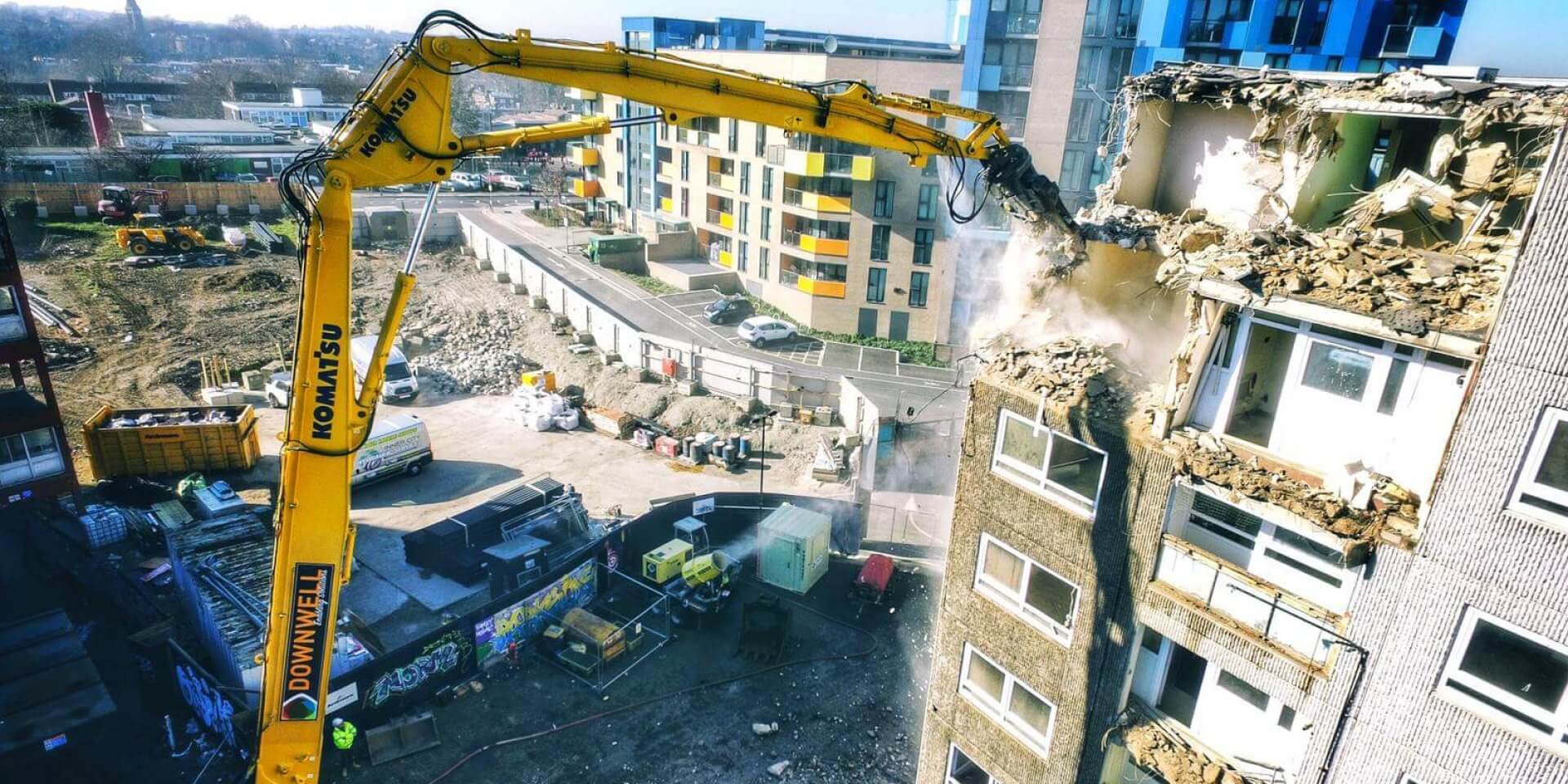JCB unveils demolition specification version of new JS360 excavator.
 JCB has introduced the JS360XD, a demolition variant on its newly-introduced JS360 excavator. A completely new model for JCB, the 36-tonne JS360 was the company’s first entry in the higher end of this weight class. The machine – which combines high torque, pump flow and bucket breakout forces with excellent controllability and stability – is now available with a series of features designed to increase its strength and resistance to the high impacts and debris common in the arduous demolition environment.
JCB has introduced the JS360XD, a demolition variant on its newly-introduced JS360 excavator. A completely new model for JCB, the 36-tonne JS360 was the company’s first entry in the higher end of this weight class. The machine – which combines high torque, pump flow and bucket breakout forces with excellent controllability and stability – is now available with a series of features designed to increase its strength and resistance to the high impacts and debris common in the arduous demolition environment.
The powerful and productive machine is fitted with heavy-duty arm protection, a platform mounted FOPS frame, undercarriage covers, side and rear impact protection, upper structure covers and a Visibowl air pre-cleaner all as standard. As optional extras, a Turbo II pre-cleaner, full-length track guides, a bucket ram guard and radiator mesh screen guard can also be specified.
When fitted with these accessories, the JS360XD becomes even more resilient to the potentially damaging conditions typically found on demolition sites.
The undercarriage plate guarding benefits from a significant strength increase on the JS360XD as the material thickness is doubled from 5mm to 10mm. Similarly, all the upper structure under plating is increased in thickness from 2 to 10 mm. Side and rear protection is provided by an integral box section design which ensures all core components of the machine are provided with an additional barrier of safety.
Heavy-duty arm protection is afforded by special edition JCB XD arms. Wear strips on the underside of the arm also provide added strength and resistance to high impact materials. Optional bucket ram guards provide 100 percent protection to the ram. Using a two-piece sliding design, the guard ensures that none of the ram (including the rod) is exposed throughout its complete stroke.
To ensure that the engine is provided with continuously clean, fresh air the JS360XD features a pre-cleaner. The air can be treated even further prior to reaching the engine with the optional Turbo II pre-cleaner. Additional protection to the engine can be afforded by a radiator mesh screen guard which ensures that dust and debris cannot block the cooling pack and enter the engine bay.
The JS360’s 7.8-litre, 6-cylinder, Tier III-compliant Isuzu engine provides high power and torque and low fuel consumption and noise levels. Producing 212kW (281hp) at 2000rpm, the power is achieved through an isochronous electronic governor which reacts automatically to hydraulic system demand, maintaining the ideal engine output for a given operating condition. The result is greater responsiveness and quicker cycle times, significantly improving the productivity the machine can deliver.
 Bay City-based Dore & Associates Contracting Inc. crews are clawing and scraping at a towering smokestack at Lake State Railway and Saginaw Bay Southern Railway, 750 N. Washington.
Bay City-based Dore & Associates Contracting Inc. crews are clawing and scraping at a towering smokestack at Lake State Railway and Saginaw Bay Southern Railway, 750 N. Washington.




 A woman and her young daughter have been killed in Georgia during the controversial demolition of a huge Soviet World War II memorial.
A woman and her young daughter have been killed in Georgia during the controversial demolition of a huge Soviet World War II memorial. JCB has introduced the JS360XD, a demolition variant on its newly-introduced JS360 excavator. A completely new model for JCB, the 36-tonne JS360 was the company’s first entry in the higher end of this weight class. The machine – which combines high torque, pump flow and bucket breakout forces with excellent controllability and stability – is now available with a series of features designed to increase its strength and resistance to the high impacts and debris common in the arduous demolition environment.
JCB has introduced the JS360XD, a demolition variant on its newly-introduced JS360 excavator. A completely new model for JCB, the 36-tonne JS360 was the company’s first entry in the higher end of this weight class. The machine – which combines high torque, pump flow and bucket breakout forces with excellent controllability and stability – is now available with a series of features designed to increase its strength and resistance to the high impacts and debris common in the arduous demolition environment.  Wrecking crews may finally start demolishing parts of Plainwell’s vacant paper-mill complex later next year if city officials keep getting good news about funding.
Wrecking crews may finally start demolishing parts of Plainwell’s vacant paper-mill complex later next year if city officials keep getting good news about funding.